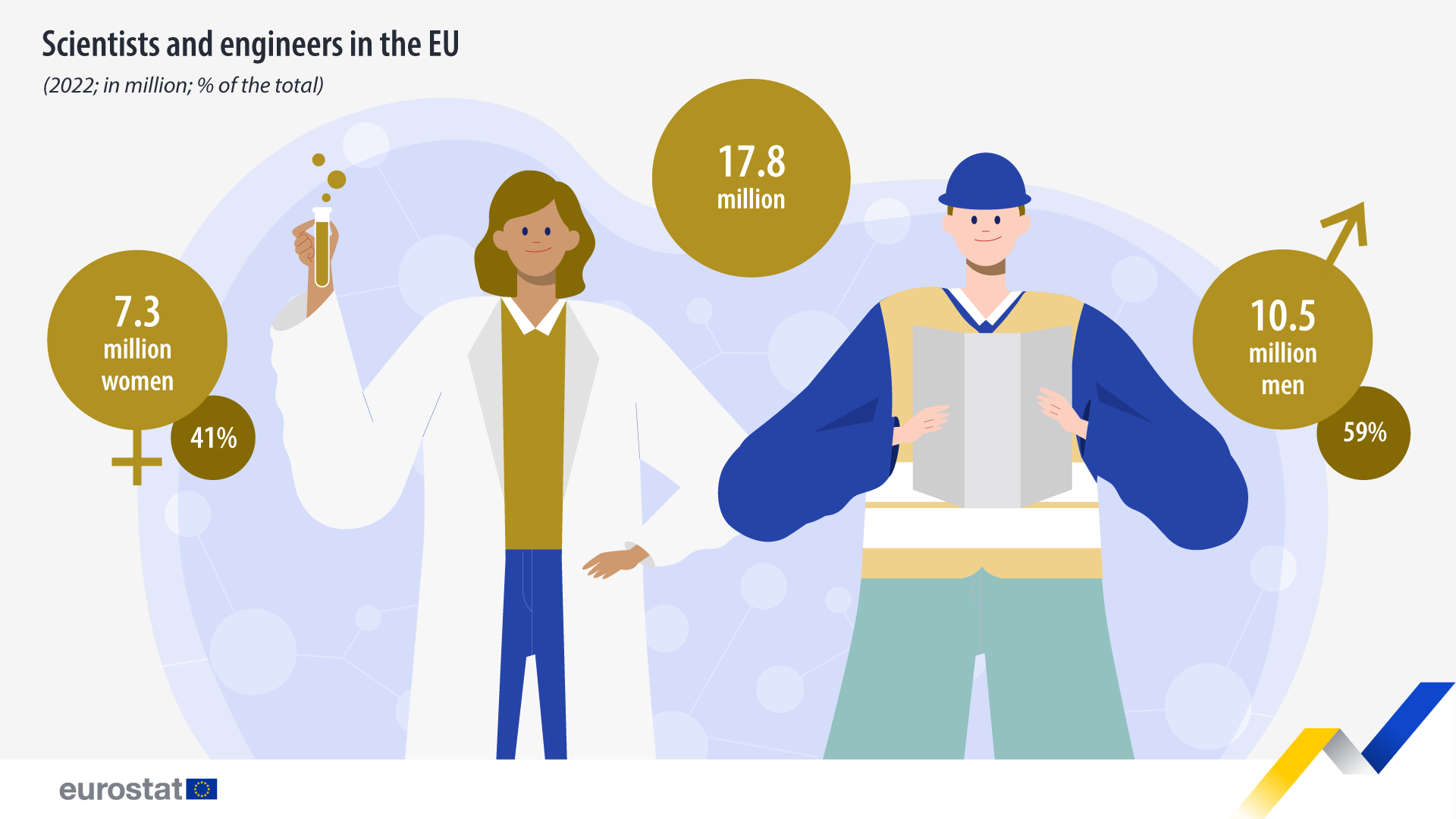41% of people employed as scientists and engineers are women

In 2022, there were almost 7.3 million female scientists and engineers in the EU, 310 500 more than in 2021, accounting for 41% of total employment in science and engineering.
Women working as scientists and engineers were primarily employed in the service sector, comprising 46% of scientists and engineers in this sector, whereas in manufacturing, only 22% of those employed as scientists and engineers were women.
Among the EU countries, the proportion of female scientists and engineers varied widely in 2022, ranging from 53% in Denmark, Lithuania (52%) and Bulgaria (51%) to 31% in Hungary, Finland (32%) and Germany (34%).
Source dataset: hrst_st_nsecsex2
Scientists and engineers are a subcategory of the broad concept of people employed in science and technology. People are classified as working in science and technology if they work in occupations that could be involved in the systematic generation, advancement, diffusion, and application of scientific and technological knowledge, independently of the level of studies. This category also includes other occupations like technicians or associated professionals.
The highest shares of women employed in science and technology occupations in 2022, in regions by level 1 of the Nomenclature of territorial units for statistics (NUTS1) were observed in Lithuania (a single region at NUTS 1 level) (64.1%), in the French region of Corse (63.9%) and in Latvia (also a single region at NUTS 1 level) (62.7%).
At the other end of the scale, the regions with the smallest proportions of females employed in science and technology were recorded in the Italian region of Nord-Ovest (45.3%), Malta (45.8%) and the Italian region of Sud (46.1%).
Source dataset: hrst_st_rsex
This news item marks the International Day of Women and Girls in Science, celebrated on 11 February.
For more information
- Statistics Explained article on human resources in science and technology
- Thematic section on science, technology and innovation
- Database on science, technology and innovation
Methodological notes
Czechia, Denmark, Estonia, Ireland, Croatia, Cyprus, Latvia, Lithuania, Luxembourg, Malta, Slovenia, Iceland, Norway and Switzerland each represent a single region at NUTS1 level of detail.
If you have any queries, please visit our contact us page.

